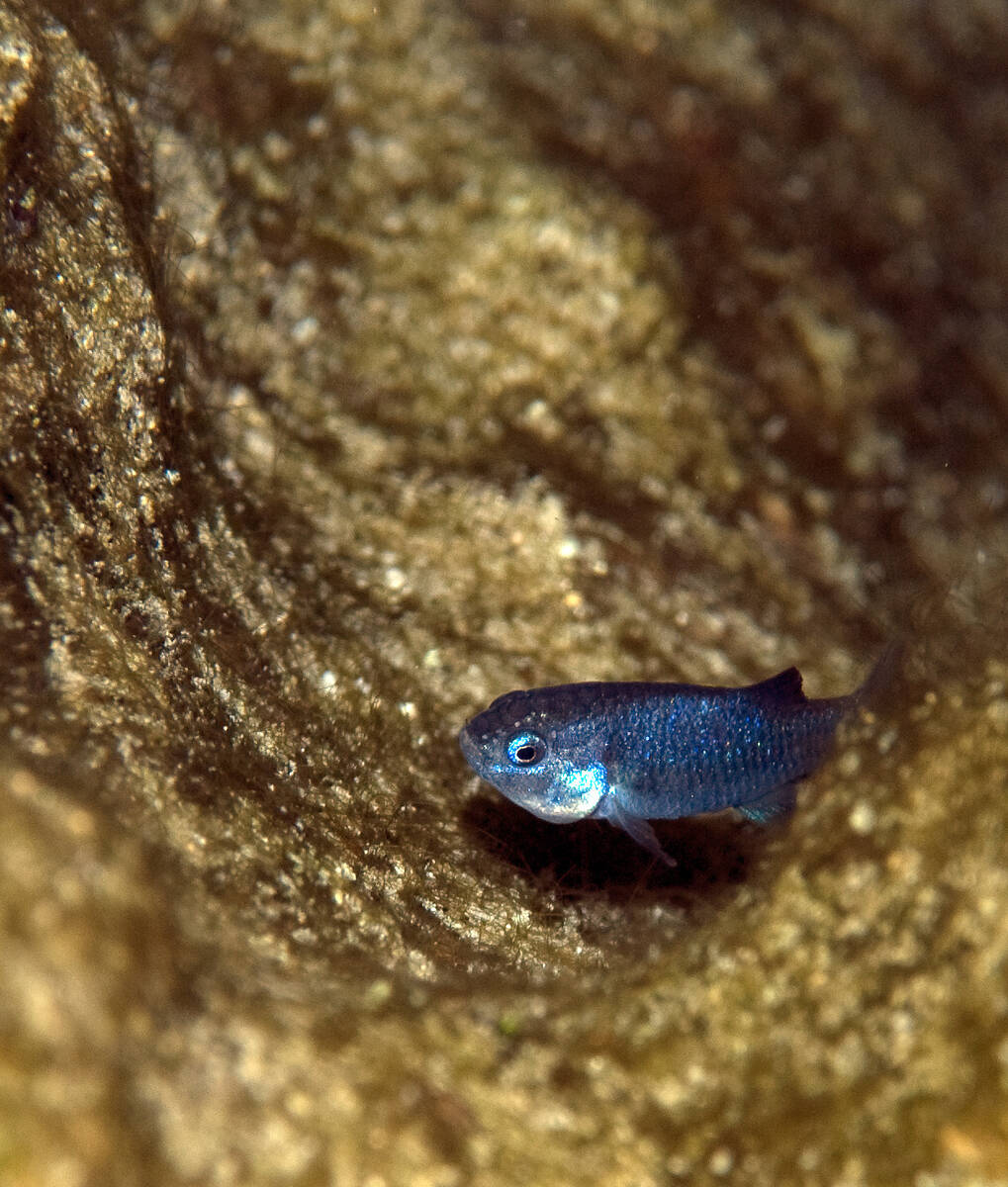Devils Hole pupfish population at 25-year high
AMARGOSA VALLEY – Agency biologists are excited to report increased numbers of one of the world’s rarest fishes. Scientists counted 191 Devils Hole pupfish, which is the most fish observed during annual spring season counts in 25 years. This is good news for the critically endangered fish living in Death Valley National Park.
Devils Hole pupfish (Cyprinodon diabolis) live in the smallest habitat of any vertebrate species on the planet. Devils Hole is a deep, water-filled cavern located near Ash Meadows National Wildlife Refuge in Nye County, Nevada. The fish live in the upper 80 feet of the cave and depend on the 11-foot by 16-feet sun-lit shallow shelf at the cavern’s entrance for food and spawning.
The remnants of Hurricane Hilary affected Devils Hole in August 2023. Flooding can have negative effects on the fish in the short term. However, Hilary mostly benefited the fishes’ ecosystem by adding nutrients that washed off the surrounding land surface in a fine layer of clay and silt.
Devils Hole pupfish are counted every spring and fall, using standard protocols. This year’s spring count was done April 6 and 7. Scientists used SCUBA to dive as deep as 100 feet to count fish. As the same time, other scientists count fish on the shallow shelf at the water surface.
Before the mid-1990s, scientists counted about 200-250 Devils Hole pupfish each spring. For about 20 years, the population dropped to an average of around 90 fish, with an all-time low of 35 fish in 2013.
Population counts in recent years have been higher. 191 observable pupfish were counted in April 2024, which is the highest spring count recorded since March 1999.
Michael Schwemm, senior fish biologist for the U.S. Fish and Wildlife Service, states, “It’s exciting to see an increasing trend, especially in this highly variable population. Increasing numbers allow the managing agencies to consider research that may not have been possible in the past, when even slight perturbations of habitat or fish had to be completely avoided. We’re excited about the future directions with respect managing this species.”
A return to higher numbers of pupfish this time of year could signal important changes in the ecosystem. Kevin Wilson, aquatic ecologist for Death Valley National Park, states “recent high spring and fall counts show the importance of maintaining long-term data as we work to find out what’s changed.”
Brandon Senger, supervising fisheries biologist for the Nevada Department of Wildlife, has been conducting SCUBA-counts at Devils Hole since 2014 and noted, “It was really encouraging to see such a large number of young fish during these spring dives. Conditions within Devils Hole looked healthy, so we have hopes of high recruitment over the coming months that will lead to a large population in the fall.”
Other biologists onsite noted fish appeared in remarkable condition and were very active. Many courting and spawning pairs of pupfish were seen during the count.
Devils Hole pupfish are jointly managed by U.S. Fish and Wildlife Service, Nevada Department of Wildlife, and National Park Service staff.
The next pupfish count occurs in fall 2024.

















